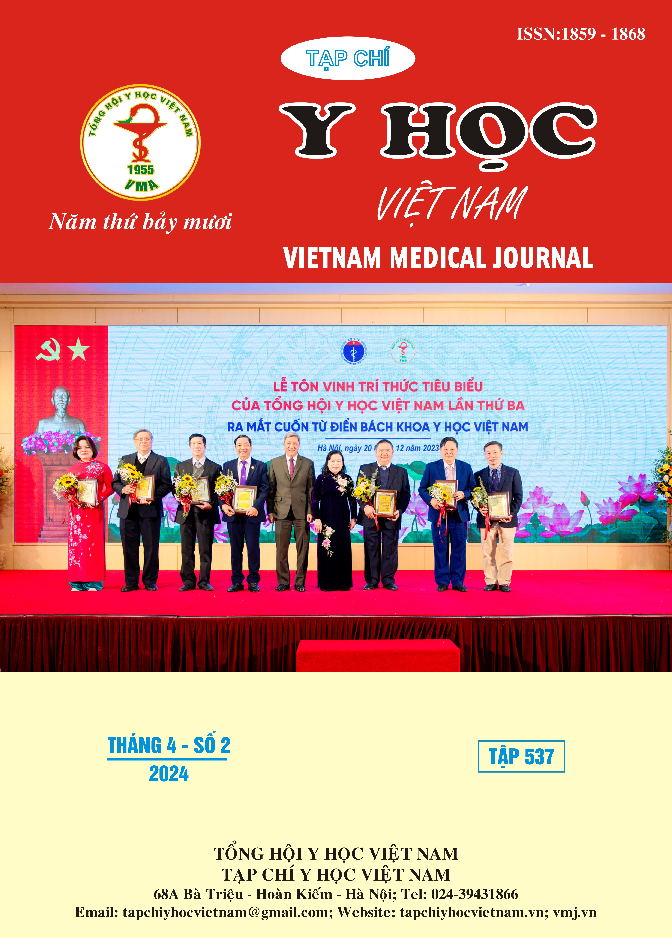CLINICAL AND SUBCLINICAL CHARACTERISTICS IN PATIENTS WITH INSTABILITY UPPER CERVICAL SPINE INJURIES
Main Article Content
Abstract
Objective: To evaluate the clinical and subclinical symptoms of patients with instability upper cervical spine injuries in order to provide indicative signs when patients have upper cervical spine injuries. Subjects and methods: Descriptive case series of 66 patients diagnosed with instability C1 - C2 vertebral fractures since March 2018. Results: 66 patients (58 males/8 females) with an average age of 38.27 ± 13.69 were diagnosed with unstable C1 - C2 cervical spine fractures. High cervical spine instability injuries predominantly occurred due to traffic accidents (56.06%) and high falls (30.30%). All patients presented with neck pain symptoms (100%), with 90.91% showing restricted cervical spine mobility, and only 24.24% exhibiting symptoms of neck stiffness. Preoperative clinical assessment of the patients according to the ASIA impairment scale was primarily classified as ASIA E (68.18%). The main injury in the study group was simple odontoid fractures, accounting for 54.55%. C1 - C2 dislocations due to various causes comprised 31.81%, and only 13.64% of the cases involved isolated C1 fractures. Conclusion: Upper cervical spine injuries exhibit nonspecific and poor clinical symptoms. Therefore, it is recommended to use imaging diagnostic tools to evaluate upper cervical spine injuries
Article Details
Keywords
upper cervical spine, C1 - C2 fractures
References
2. Frank H Netter.Md (1997), "Human Atlas ( Giải phẫu người )", Nhà xuất bản Y hoc.
3. Gertzbein SD, Robbins SE. Accuracy of pedicular screw placement in vivo. Spine. 1990;15:11–14
4. Harms J, Melcher RP. Posterior C1–C2 fusion with polyaxial screw and rod fixation. Spine. 2001;26:2467–2471.
5. Wackenheim (1989), "Radiology of the cervical spine", Radiologe, 29(4): tr. 176-8.
6. Yonghong Zheng, Dingjun Hao, Biao Wang và các cộng sự. (2016), "Clinical outcome of posterior C1–C2 pedicle screw fixation and fusion for atlantoaxial instability: A retrospective study of 86 patients", Journal of Clinical Neuroscience, 32, tr. 47-50.
7. Richard H Rothman và Frederick A Simeone (2006), Rothman-Simeone, the Spine, Vol. 1, Saunders Elsevier.
8. Hà Kim Trung (2005), "Nghiên cứu chẩn đoán và phẫu thuật chấn thương cột sống cổ có thương tổn thần kinh tại Bệnh viện Việt Đức", Luận án tiến sỹ y học, Đại học Y Hà Nội, Hà Nội.
9. Praveen V Mummaneni và Regis W Haid (2005), "Atlantoaxial fixation: overview of all techniques", Neurology India, 53(4), tr. 408.
10. Atul Goel và Francesco Cacciola (2011), Craniovertebral Junction: Diagnosis--Pathology--Surgical Techniques, Thieme.


